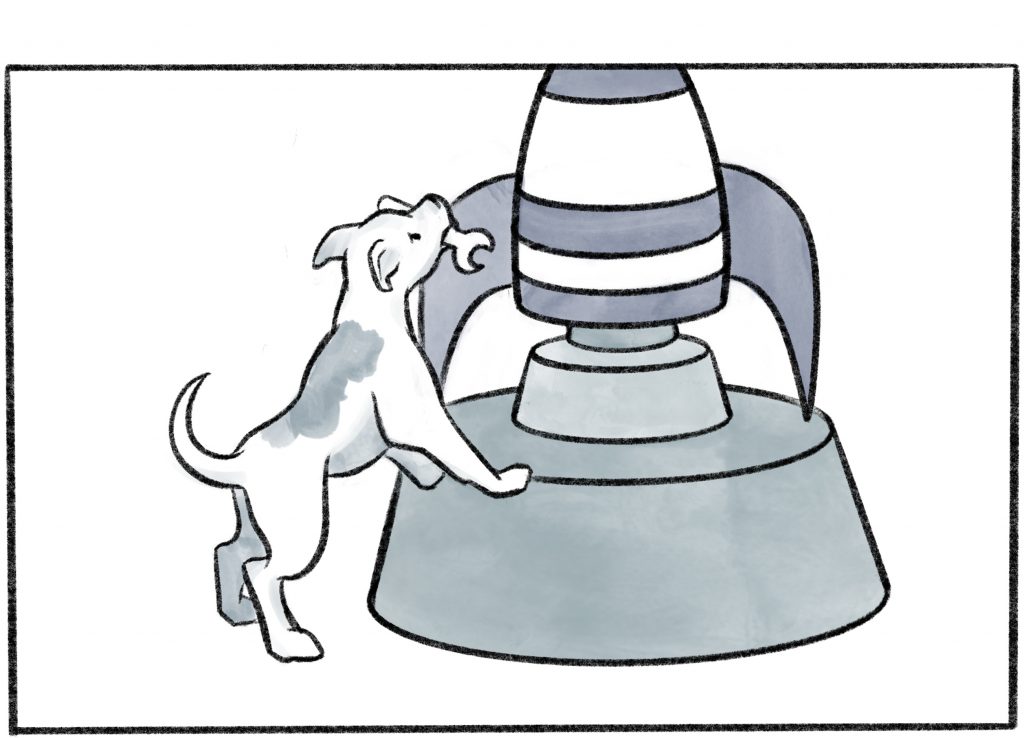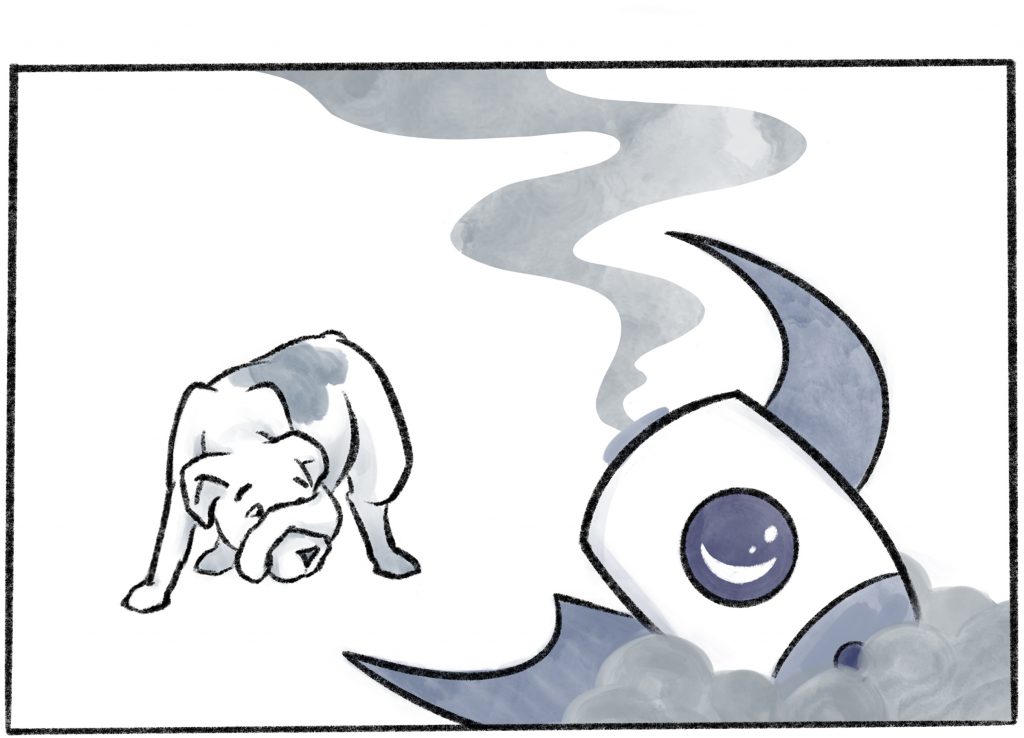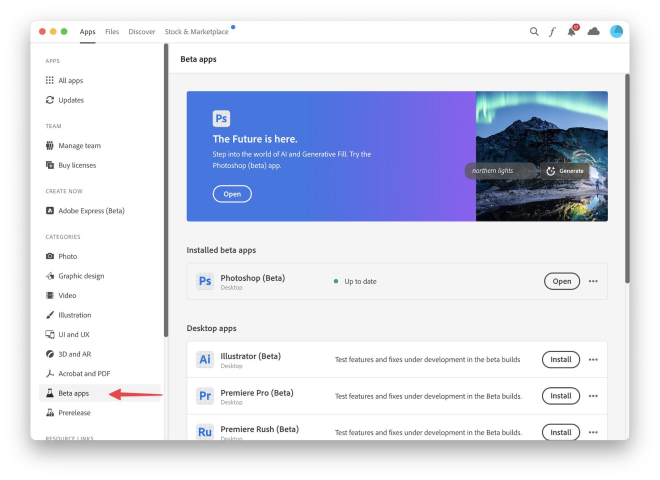4 things I wish I’d learned before joining a bootstrapped tech startup
I’ve always held a sliver of bitterness toward my experience in business school. I was never enchanted by the idea of joining the corporate world (entrepreneurship was much more intriguing to me), yet it felt like every aspect of my education was funneling me in that direction — from the career fairs, to the case studies we were assigned, and even the fact that we were required to wear suits for class presentations. 🥴
While most of my peers joined Fortune 500 companies after graduating, I joined Astropad, a bootstrapped tech startup that was just four people at the time. After 5 years here, the company has tripled in size, we’ve launched three new products, and I’ve not once had to wear a suit.
As I progress in my career, I can’t shake the feeling that my business education neglected some pretty fundamental lessons about how to succeed in a startup environment. This is what I’ve had to learn the hard way on the job.

1. How to actually talk to customers
In business school, we learned about marketing research tactics, like how to design a quantitative survey and what a focus group is. And while these tactics definitely serve a purpose, they also have their limitations.
Steve Jobs was a notorious skeptic on these research tactics. He said: “It’s really hard to design products by focus groups. A lot of times, people don’t know what they want until you show it to them.”
My skepticism with traditional marketing research is that it often feels cold and stiff; it’s hard to get the most authentic customer feedback by hiding behind a survey. You need a human connection to really understand how your customers think and feel.
Keep it casual
If you’re going to develop a genuine human connection with customers (or potential customers), you need to approach the conversation with some humility. Active listening means setting aside your pride, even if that means hearing about your product’s shortcomings.
I’ve personally chatted with customers in person, over email, Zoom, social DMs, and on the phone. It doesn’t need to be too formal; talk like you’d talk to a friend over a cup of coffee. Being real will warrant real feedback.
Active listening requires setting aside your pride, even if that means hearing about your product’s shortcomings.
Make it part of everyone’s job
In a startup, marketing research and customer feedback shouldn’t be outsourced to an agency or left to a remote silo of the business. Instead, make it a casual practice that’s baked into every department.
At Astropad, our Support Team spends all day talking to customers and relaying feedback to the Engineering and Marketing Teams. But the Engineering Team also helps out with support requests, giving them a direct line of communication with our users. On the Marketing Team, we often go to customers for content inspiration, chatting with users about how our products fit into workflows. No one should be too busy to have a chat with someone who uses our products.
Most importantly, Astropad’s founders stay close to the customers, too. We believe that company hierarchy shouldn’t mean the leaders at the top are furthest from the customer. It’s not uncommon to hear about a recent conversation our CEO had with a user over email or Twitter (his DMs are always open).
Company hierarchy shouldn’t mean the leaders at the top are furthest from the customer.
Listening is the backbone of new products
Pretty much all of our new product ideas are inspired by customer conversations. For example, in the early days of Astropad, one of the most common requests we heard was to be able to turn the iPad into a wireless second display, so we built Luna Display. Then, we started hearing from customers that more artists were switching from Macs to PCs, so we started developing our products for Windows.
Having a stream of new products in the pipeline is what has kept Astropad alive, despite facing adversity from competitors. With that in mind, it’s always worth it to make time to talk with your customers, no matter where you sit on the team or how big or small your company is.

2. How to be scrappy
Business school was designed for the corporate world, but it didn’t prepare me for the limitations of working for the underdog. Big corporations have steep budgets for things like advertising, hiring, and consultants. I remember reading case studies where it seemed like you could solve any problem by throwing money at it: Need to reach a new target audience? Design an expensive marketing campaign. Falling behind on product development? Grow your engineering team.
But that kind of mentality is unrealistic for the startup world. Most bootstrapped startups don’t have big budgets (if they have any budget at all), and they’re usually understaffed. You’ll need to be creative and nimble to work within those limitations.
Embrace ruthless prioritization
On the engineering side, our team has spent the last two years rewriting our tech infrastructure in the programming language Rust. It’s been a slow process with a steep learning curve, and we’ve had to put a lot of projects on the back burner in order to go all-in on this strategy, impacting every department. It’s come at the cost of being able to put out updates to our existing products as frequently as we’d like to.
But the long-term upside will be monumental for Astropad: Not only will Rust help our products run faster and more reliably, but it also works cross-platform so that we can expand to the Windows market. Even more, we’ll be able to repurpose this new code platform into future products.
It feels like we’re often in a situation at Astropad where we have three big projects that need to get done, but we only have the time and resources to focus on two of them. We’ve needed to get comfortable with ruthless prioritization and choosing projects that will have the biggest long-term impact.
We’re often in a situation where we have three big projects that need to get done, but we only have the time and resources to focus on two of them. Get comfortable with ruthless prioritization and choose projects that will have the biggest long-term impact.
Play the long game
You can squeeze the most out of your limited resources by focusing on low-cost efforts that have long-term payoffs. When it comes to our marketing strategy, we’ve opted for more organic content efforts rather than spending on paid advertising. Advertising is fleeting; you can reach a lot of people really fast, but the payoff stops as soon as the spending stops.
With content marketing, the return isn’t as immediate, but it builds over time. It doesn’t cost us much money to publish a blog post, podcast episode, or Youtube video, but over time we’ve seen steady growth to our site traffic, SEO ranks, and brand recognition. Playing the long game can feel painstaking at times, but with persistence, it’s a resourceful way to see long-term returns.
The secret advantage of limitations
Working within the limited resources of a startup isn’t all bad. When you’re small, you can be nimble, and that makes it easy to adapt quickly. When Astropad got sherlocked by Apple, it didn’t take long for us to completely pivot our strategy to go cross-platform. As the underdog, you can move fast without having to rearrange huge budgets or reconfigure teams.

3. How to roll up your sleeves
While business school taught strategy, it didn’t teach how to actually get the work done. It’s one thing to come up with the concept for a marketing campaign, but what about executing on it?
Say yes (even if you’re clueless)
There was an underlying assumption in school that you’d delegate that work to another department or outsource it to an agency. But at a bootstrapped startup, you often need to be a generalist to tackle all angles of a project.
Over my years at Astropad, I’ve done an assortment of projects that I’m not exactly qualified for: building an e-commerce site, writing video scripts, talking to journalists, even hand-modeling during our product shoots. Every time an opportunity like that comes up, I always say yes, even if it’s outside of my comfort zone.
There’s a learning curve with those tasks, but figuring out how to do them without calling on outside resources adds to the “nimbleness factor.” If you ever need a quick turnaround on a project in the future, you can just roll up your sleeves and get to work.
Learn from the experts
I don’t have a huge team or budget to rely on, so I often have to be a copywriter, a designer, and a public relations expert, all in the same day.
Since business school doesn’t teach how to write strong copy or plan a product video, those skills all came from learning on my own, and lots of practice. I often turn to industry experts to fill my knowledge gaps. Here are a few of my favorites:
- The 22 Immutable Laws of Marketing: I like to revisit this book a couple of times a year whenever I’m facing a big business challenge; it’s a good refresh on the fundamentals of marketing.
- Julian Shapiro’s Handbook for Writing Well: This is a 30-minute handbook that promises to help you “become a remarkably better writer.”
- Help Scout Customer Loyalty Blog: While this blog is geared towards customer support, it has a ton of good insight about how to communicate with customers and integrate customer feedback into every angle of your business.
- Harry’s Marketing Examples: From copywriting to branding to SEO, this site publishes the best marketing guides. Each guide is backed up with tons of examples of what to do and what not to do, in a digestible and fun format.
- Matthew Kobach: Matthew tweets his insights about social media and content strategy.

4. How to fail
During school, my peers and I were pitted against each other with a hypercompetitive grading curve. Using those metrics, getting an “A” was a cut-throat prize measure of success. Similar to standardized testing, you could learn to master the system without actually absorbing the long-term lessons along the way. By incentivizing perfect grades, these systems create a cohort of perfectionists who are too afraid to fail.
Fail earnestly
In a startup, everything is new; new products, new customers, new brand, new employees, new managers. We’re all constantly learning on the job, and the only way to tackle that immense newness is to put yourself out there, experiment, and fail. And then move on.
Don’t hold yourself to a standard of perfectionism. I like to remind my team that perfectionism is a horizon; when you try to move closer, the further it gets. It’s ok to put out work that isn’t quite polished, because if it misses the mark then it won’t sting as bad. Put your work out into the world early, gather feedback, and then work towards optimizing it. Productive failure also requires some mindfulness, because you need to be self-aware enough to acknowledge your mistakes.
Put your work out into the world early, gather feedback, and then work towards optimizing it.
A trickle down approach to failure
Being open about your failures is a vulnerable thing to do, so company leadership needs to set that example. We should all see our founders fail. Managers should fail. And if failure is celebrated from the top, then it will be approached openly from every place in the company.
I’ve seen Astropad’s founders fail many times before. They’ve hired the wrong people, trudged forward with a business decision that they should have walked away from, and gotten distracted with projects that didn’t impact our bottom line.
Perhaps the biggest mistake that they’ve made over the years was not moving our products cross-platform sooner. For the first six years of Astropad’s existence, we operated strictly within the Apple ecosystem. We had discussed going cross-platform to support Windows many times, but we always pushed it off because it seemed as if there were more imminent product issues to tackle.
But being reliant on the App Store left Astropad vulnerable to being “sherlocked,” which is exactly what happened in 2019: Apple copied Astropad’s second display product and baked it into macOS as a free feature. It was emotionally and financially devastating for the company; devastation that could have been prevented if we weren’t so dependent on Apple.
Ultimately, we’ve been able to overcome that adversity and we’re stronger than ever because we learned a tough lesson. But a healthy step in that process was for our founders to openly recognize where things went wrong, document what we learned, and forge ahead.
We should all see our founders fail. Managers should fail. And if failure is celebrated from the top, then it will be approached openly from every place in the company.
The textbook that doesn’t exist
School pushes you in important ways, like how to be disciplined and how to think critically; and I can’t discount those skills. But there will always be a leap between studying a textbook and real world experience.
It’s so cliche, but working at a startup is a lot like a roller coaster. Holding on for the ride demands vulnerability and grit — which is tough to do when you’re under the constraints and limitations of a bootstrapped business. You definitely can’t learn any of those lessons in a textbook… so perhaps the only way to ever prepare yourself is to just dive in head first with the right attitude.
[thrive_leads id=’20073′]





